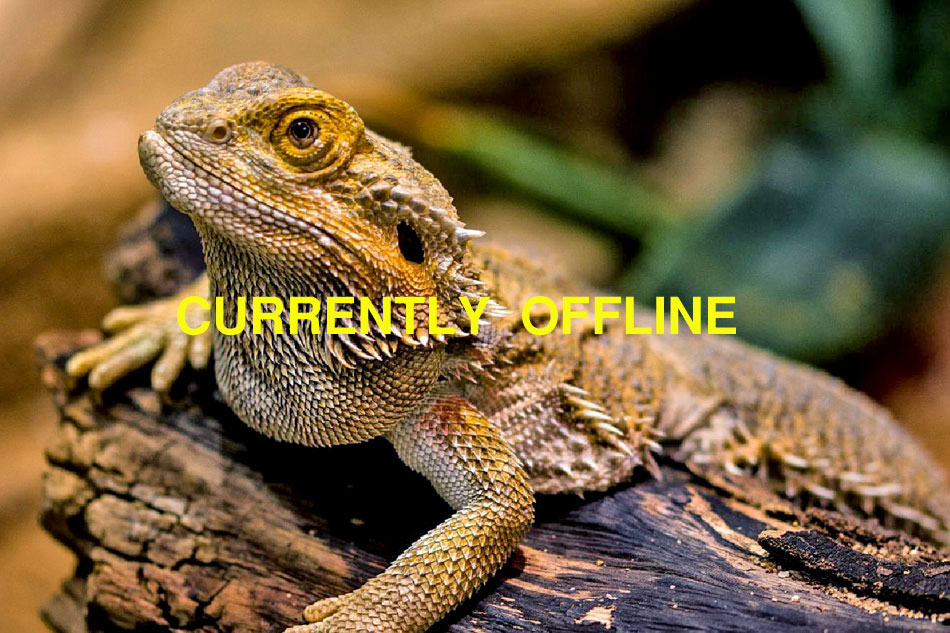
SKINKS AND MONITORS, LIVE WEBCAM
- Local time
- Location: Lone Pine Koala Sanctuary, Fig Tree Pocket, Queensland, Australia
- Source: Lone Pine Koala Sanctuary
- Info: Live streaming webcam showing Hosmer's skinks, Downs Bearded Dragons and Pygmy Mulga Monitors at the Lone Pine Koala Sanctuary in Queensland, Australia.
Hosmer’s skinks grow to 23 centimetres long, nearly half of which is the tail. The scales on their body have 3-4 sharp points (or keels) and the scales on the tail each have a long spine. In the wild, when threatened they wedge themselves in between the rocks and puff out their spikey bodies, making them very hard to remove. Their colouring is light yellow-brown to brown with creamy to dark brown blotches that are more prominent around the head.
Hosmer’s skinks are omnivorous eating a variety of insects, leaves, shoots and berries. They give birth to live young - generally to 3 or 4 in number.
Bearded dragons are lizards that are native to Australia. They typically prefer to stick to warm, arid areas: deserts, subtropical woodlands, savannas, and scrublands. The bearded dragon is equipped with an armour of spiny reptilian scales, which include a “beard” of spikes under its chin that puffs up depending on its mood. Their spiny scales appear dangerous but are in fact soft, flexible, and not very sharp. There are eight species species of bearded dragons recognized today, all of which are affectionately called “beardies.” Like the skinks, bearded dragons are omnivorous.
The pygmy mulga monitor is native to northwestern and central Australia and is found under the loose bark of desert she-oaks, and the hollows of eucalyptus, mulga, and myall trees. The pygmy mulga monitor is arboreal, with a prehensile tail. It grows to a total length of around 30 to 40cm and weighing 60 t0 80 grams. The upper surface is brown, grading to grey at the sides. Monitor lizards are thought to be venomous. While harmless to humans, the toxin is lethal to small animals.

